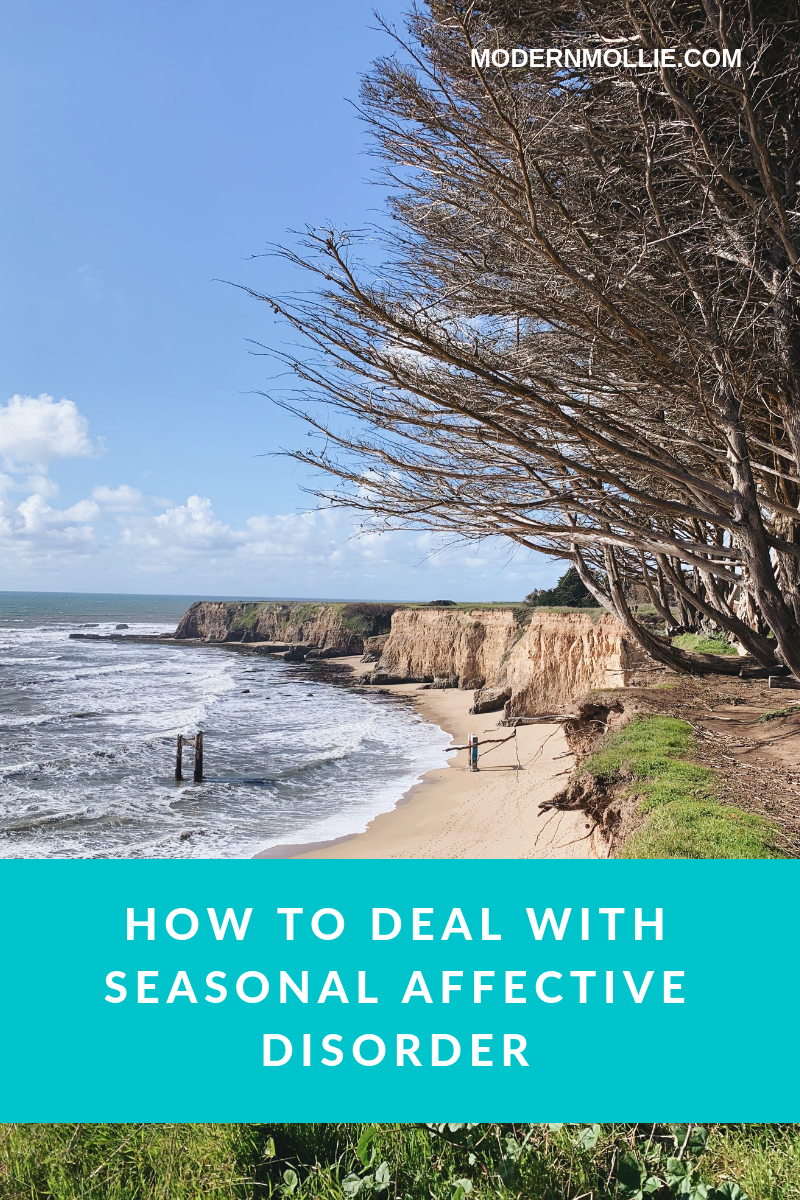We may earn money or products from the companies mentioned in this post.

After the hype of the holidays and the promises of a new year wears off, life can feel like a bit of a let down. The weather is colder, trees are bare, and we can’t spend as much time outside as we do the rest of the year. It can be easy to fall into a short term depression also known as seasonal affective disorder (SAD).
Mayo Clinic defines SAD as “a type of depression that’s related to changes in seasons — SAD begins and ends at about the same times every year. If you’re like most people with SAD, your symptoms start in the fall and continue into the winter months, sapping your energy and making you feel moody.” SAD is brought on by the decrease in sunlight and not being able to be outside as much. This condition is typically self-diagnosed and resolves itself within months. While SAD doesn’t generally hinder your life drastically, it certainly doesn’t feel good and can disrupt your quality of life.
My mild cases of SAD got much worse when I moved to New York City. In California, I’d still been able to get outside in the winter months. Once I moved to the East Coast, I truly felt the differences that living some place that snowed brought on. I’d never been stuck inside for days because the cold temperatures and ice made it dangerous to venture outside. I got used to be in my apartment far more than I wanted to be and suffered the consequences with a mild depression. I discovered a few tips and tricks to ease the symptoms.
HOW TO DEAL WITH SEASONAL AFFECTIVE DISORDER
- Movement: Any form of movement that works for your body and you enjoy can help alleviate seasonal affective disorder.
- Sunshine: However possible – let in some sunlight. Whether a short walk outside (if possible) or opening covers to let natural light in, the sun can elevate your mood quickly.
- Vitamin D: Getting outside and getting some sun helps you maintain adequate levels of vitamin D, which impacts your mood. If you’re not able to get outside, make sure to take a vitamin D supplement!
- Light Therapy: For those who can’t get outside, I’ve heard that purchasing a light therapy box can be extremely helpful.
- Talk To Someone: Speaking with someone can make a huge difference. Reach out to family, friends, and/or a therapist. If your quality of life is severely affected, talk to your doctor or a health care providers for guidance.
- Stick To A Routine: Creating and maintaining a routine can help you feel on track and productive, which can positively impact your mood. It definitely helps me to have structure when I feel low.
- Journal: Writing is another great way to cope with depression. I feel it’s helpful to journal first thing in the morning – it’s an excellent way to clear your mind. I like to do “morning words” or a “brain dump” either first thing or before I start working. I try to write three pages of whatever is on my mind – it doesn’t matter what it is. It puts any stressors on paper and gives me space to go about my day without worrying too much. This is the journal I have!
- Gratitude: On a similar note, I also write down what I’m grateful for in my journal. I used to think gratitude journals were cheesy and didn’t really do anything for you but there is actually research that shows that expressing gratitude does help your mood.
- Take A Vacation: This is probably isn’t feasible for a lot of people but if you have the means and flexibility, take a vacation!
- Distractions: Find happy distractions to help you escape. Joe and I got MoviePass (RIP) last year and now we have CineMark Movie Club. This gives us a fun and distracting activity to do when the weather is less than ideal.
These are just a few ideas to help treat SAD and I hope they are helpful. If you are feeling depressed for an extended period of time or it is hindering your daily life, please reach out to your health care provider for help!


